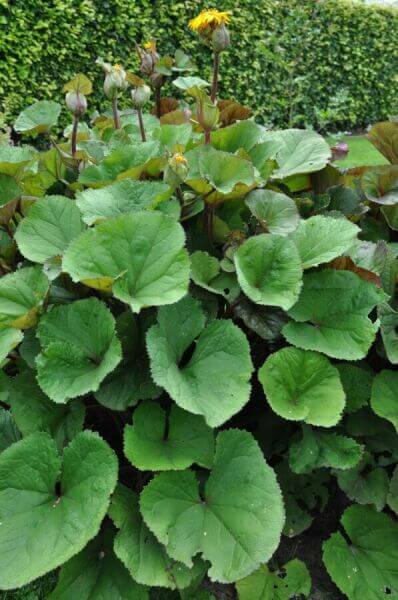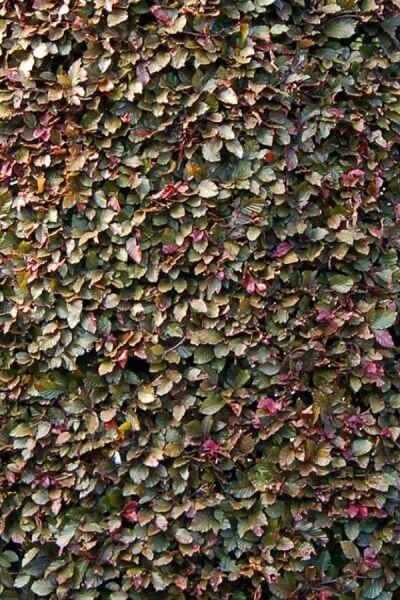Hedge Plants For Seaside Gardens
Hedge Plants For Seaside Gardens
Blog Article
Hedge Plants For Sound Barriers
Improve your garden's attraction with rich hedge ranges such as Yew (Taxus), Thuja, Laurel, Photinia, and Bamboo, celebrated for their structural integrity and ecological benefits.
Yew and Thuja offer evergreen protection and winter strength, while Laurel offers fast development and broad, fragrant leaves.
Photinia adds seasonal beauty with its lively red foliage, and Bamboo lends a low-maintenance, peaceful atmosphere.
These hedges enhance air quality, decrease sound, and develop tranquil, private areas.
Correct planting, spacing, and maintenance guarantee energetic growth and environmental consistency.
Check out how these lush varieties can elevate your garden's beauty and well-being.
Secret Takeaways
Change Your Garden With Lush Hedge Varieties
- Select Yew for its thick, evergreen development and unrivaled longevity.
- Choose Laurel for its fast development and broad leaves, ensuring fast personal privacy.
- Choose Photinia for its dynamic seasonal foliage, which turns a striking dark red.
- Make use of Bamboo for a low-maintenance, winter-hardy hedge with aesthetic appeal.
- Space plants 2-3 per meter and prune regularly for ideal development and health.
Popular Hedge Plants
When changing a garden with lush hedge varieties, it's important to think about popular hedge plants such as Yew, Thuja, Laurel, and Photinia due to their distinct characteristics and advantages.
Yew (Taxus) is extremely respected for its durability and thick, green growth, making it a prime choice for withstanding landscapes.
Thuja is noted for its evergreen foliage and robust winter durability.
Photinia adds seasonal vibrancy with red leaves that darken over time, producing dynamic visual appeal.
Laurel offers rapid growth and fragrant, broad leaves, ideal for fast personal privacy.
In Addition, Bamboo is an exceptional option for atmosphere, providing a low-maintenance, winter-hardy choice that enhances the garden's aesthetic with its elegant, swaying walking canes.
These choices accommodate a variety of horticultural requirements and choices.
Benefits of Garden Hedges
Garden hedges offer a wide range of benefits, making them an important addition to any landscape. These natural barriers are economical to execute and provide substantial wind security, improving air circulation and adding to noise decrease. The thick foliage of hedges like Thuja and Beech guarantees personal privacy by blocking visibility, developing a remote and peaceful environment.
Hedges also play a vital function in microclimate regulation, supplying a steady environment that fosters plant development and reduces temperature level changes. Their detailed leaf structures filter contaminants, enhancing air quality and contributing to a much healthier garden community.
Moreover, hedges master sound reduction, soaking up and deflecting sound waves to lower ambient sound levels. This dual functionality of supplying both visual and acoustic personal privacy improves the total tranquility and aesthetic appeal of any garden.
Planting and Maintenance Tips
For an effective hedge, precise preparation of the planting location is essential. Make sure the soil has proper pH and drain to support strong root advancement.
Space the plants properly for the picked types. Water the hedge frequently throughout its preliminary growth phase, adjusting as required with seasonal changes.
Execute a organized bug control and disease avoidance method, using organic or chemical treatments when essential. Frequently inspect for aphids, mites, and fungal infections.
Apply mulch to keep wetness and reduce weeds. Seasonal pruning promotes thick development and air circulation, important for plant health.
Following these guidelines will assist you cultivate a lively, well-maintained hedge that enhances the charm of your garden.
Spacing and Trimming Guidelines
Spacing and Trimming Standards
Correct spacing and trimming are important for cultivating healthy, aesthetically appealing hedges. Appropriate spacing makes sure each plant gets enough nutrients, light, and air flow.
Follow these standards for optimum hedge upkeep:
- Spacing: Position hedge plants 2-3 plants per meter to motivate robust development.
- Pruning Strategies: Routine pruning is vital for preserving preferred hedge height and shape. Trim new growth in summer and cut down older wood throughout winter season.
- Seasonal Care: Adjust trimming techniques and schedules according to seasonal requirements to guarantee plant health.
- Hedge Height: Regularly monitor and cut to keep the preferred hedge height and achieve uniform aesthetics.
Complying with these actions will guarantee your hedge prospers, enhancing both the appeal and performance of your garden.
Picking the Right Hedge
Selecting the Right Hedge
Choosing the proper hedge includes assessing factors such as mature height, foliage density, and ecological durability. Effective hedge plant choice requires comprehending each species' growth attributes and site-specific versatility.
For instance, Yew (Taxus) uses excellent durability and dense development, while Thuja is noteworthy for its winter durability. Additionally, thinking about maintenance requirements is important; fast-growing species like Laurel or Privet need regular cutting, whereas low-maintenance options like Bamboo or Ivy may be preferable for those looking for minimal maintenance.
Ecological elements such as soil type, light schedule, and moisture conditions need to also direct the choice process. This mindful approach guarantees the picked hedges will flourish, supplying both aesthetic and functional benefits to the garden landscape.
Shipment and Planting Advice
To ensure your hedge plants grow, they should be delivered by specialized carriers and planted promptly upon arrival.
Follow these important actions for effective planting:
- Soil Preparation: Enrich the soil with organic matter to improve drain and nutrient material.
- Planting Depth: Create a trench twice the width and equivalent to the depth of the root ball.
- Watering Strategies: Water completely after planting, keeping the soil consistently moist but not saturated.
- Mulching: Apply a layer of mulch to keep wetness and suppress weeds.
Client Assistance and Service
Offered the vital function of timely support in horticultural pursuits, our consumer support team is readily available 6 days a week through telephone, e-mail, and social networks to offer expert suggestions and quickly resolve any issues. Their dedication to fast response times ensures customer complete satisfaction by fixing inquiries connected to plant health, optimum planting approaches, and upkeep schedules.

Communication Technique
Within 2 days
This extensive support system, strengthened by an excellent 9.3/ 10 consumer rating, highlights our commitment to enhancing the gardening experience for each client.
Often Asked Questions
For How Long Does It Consider Hedge Plants to Develop?
Hedge plants usually need one to 3 years to end up being totally developed, with the specific period differing by types and growing conditions.
Efficient care throughout this vital period is important for robust growth. Consistent watering, vigilant weed control, and appropriate fertilizer application are pivotal in promoting hedge plants strong root advancement.
For instance, fast-growing species like Laurel may develop faster, while slower-growing ranges such as Yew may take longer. Thorough maintenance accelerates the establishment process, resulting in dense and healthy hedges.
What Are the very best Hedge Plants for Personal Privacy?
The concern of the very best hedge plants for personal privacy includes evaluating evergreen and deciduous options.
Evergreen hedges like Thuja, Laurel, and Cypress supply year-round protection, guaranteeing continuous privacy.
On the other hand, deciduous hedges such as Beech provide seasonal privacy, shedding leaves in colder months.
Secret maintenance suggestions for personal privacy hedges consist of regular cutting, fertilizing in spring, and correct spacing-- usually 2 to 3 plants per meter.
Additionally, constant watering and diligent weed elimination are important for promoting healthy, dense development.
Can Hedge Plants Draw In Wildlife to My Garden?
Yes, hedge plants can attract wildlife to your garden by offering important advantages like shelter, food, and nesting sites, thereby improving local biodiversity. For example, yew, holly, and laurel are excellent for bring in birds, while ivy supports a variety of pests.
However, it is essential to note that there are some downsides, such as increased upkeep to handle pests and routine maintenance. Carefully choosing and maintaining hedge ranges can help stabilize these benefits and disadvantages, eventually cultivating a sustainable and lively ecosystem in your garden.
Are There Any Blooming Hedge Plants Available?
Yes, there are flowering hedge plants available that can improve the appeal of your garden.
For example, Elaeagnus, also referred to as Olive Willow, produces aromatic white flowers in the fall, adding a touch of beauty.
Photinia, another popular option, showcases lively red leaves that mature into a rich green, producing a vibrant visual result throughout the seasons.
To make sure these plants thrive, it's necessary to practice correct pruning strategies and seasonal upkeep, such as trimming brand-new development in the summer and cutting back in the winter.
These steps will assist keep the health and aesthetic appeal of your flowering hedges.
How Do I Prevent Pests in My Hedge Plants?
To prevent pests in hedge plants, utilize natural insect control techniques and keep correct hedge care. Present beneficial insects like ladybugs, which prey on harmful pests, to create a balanced ecosystem.
Regularly inspect your hedges for signs of infestation and immediately eliminate any afflicted parts to prevent the spread. Ensure the health of your hedges by applying balanced fertilizers and providing adequate water.
Utilize mulching to retain soil wetness and correct spacing to minimize plant tension and promote robust growth. These practices collectively assist in decreasing bug concerns and preserving a healthy hedge.
Conclusion
In essence, choosing the right hedge ranges such as Yew, Thuja, and Laurel can change any garden into a peaceful haven. These plants supply year-round greenery, enhance visual appeal, and offer practical advantages like noise reduction and wind defense.
Appropriate planting techniques, precise spacing, consistent watering, and seasonal trimming are vital for optimum growth.
Trustworthy delivery services and skilled client support make sure a seamless experience from purchase to planting, making it simpler than ever to raise your outdoor area.
Garden hedges offer a multitude of advantages, making them a valuable addition to any landscape. These natural barriers are cost-efficient to execute and supply considerable wind defense, improving air blood circulation and contributing to noise decrease. The dense foliage of hedges like Thuja and Beech makes sure privacy by blocking presence, producing a tranquil and secluded environment.

Pruning Techniques: Routine pruning is necessary for preserving desired hedge height and shape. Cut brand-new growth in summer season and cut back older wood throughout winter.
Report this page